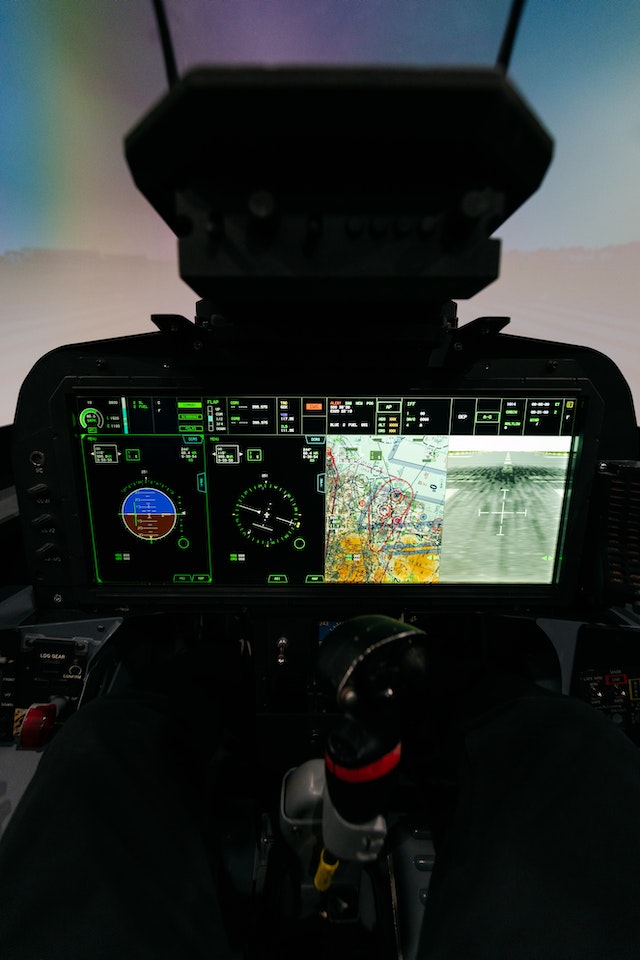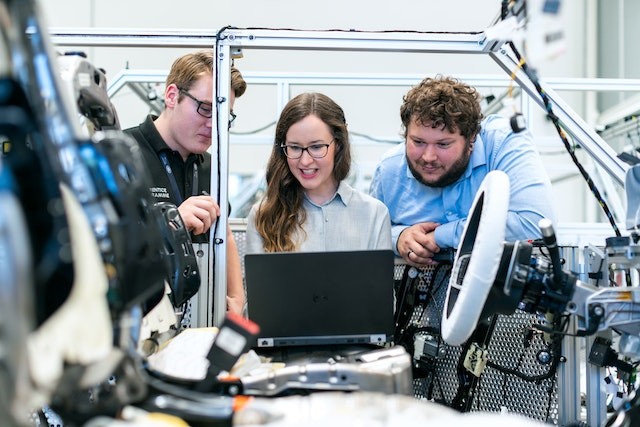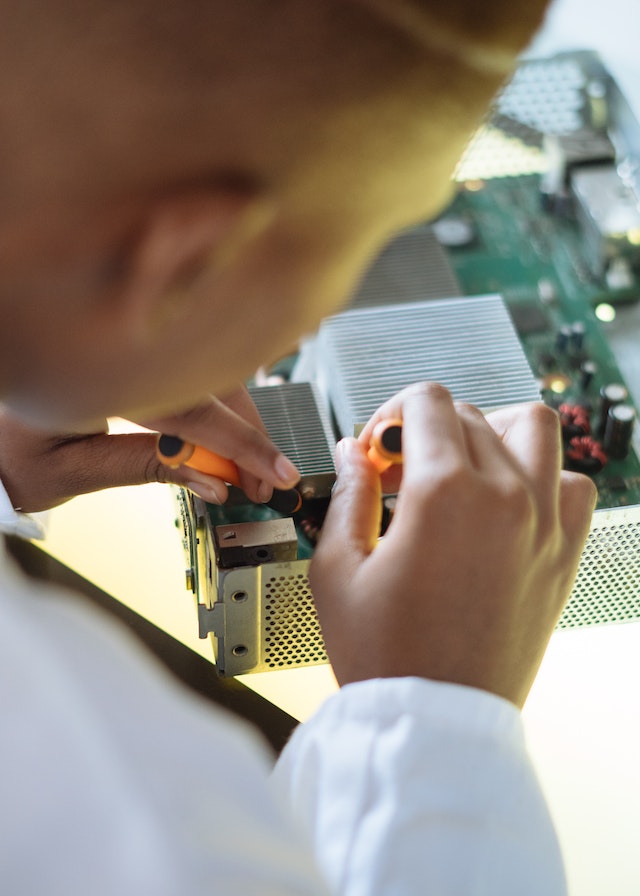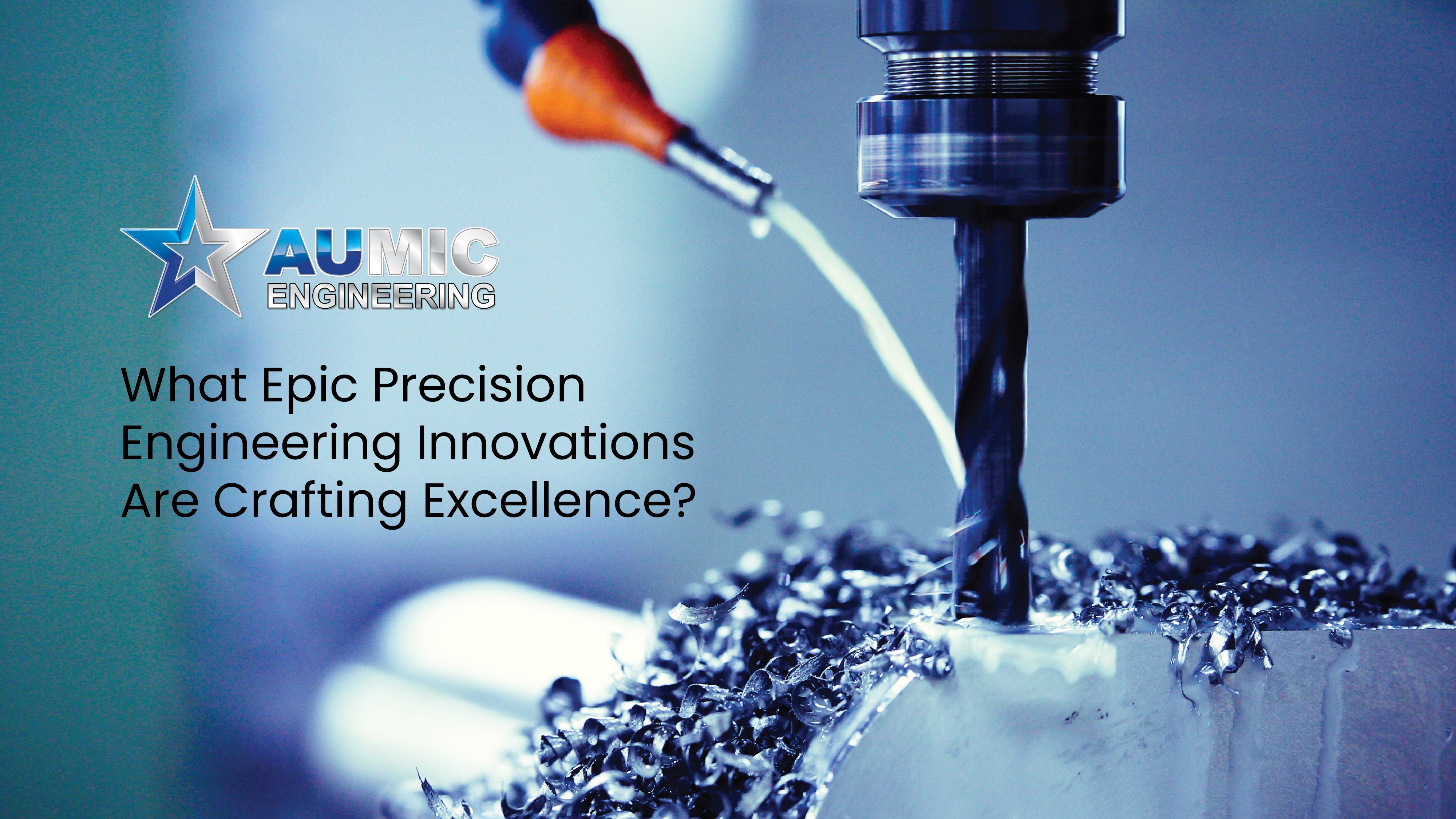In the realm of precision engineering, where minor details make monumental differences, innovation is the driving force behind crafting excellence.
This article delves into the captivating world of precision engineering innovations, showcasing how these breakthroughs are reshaping industries and redefining what is possible.
Join Aumic Engineering on a journey through the realms of precision, where innovation knows no bounds.
The Precision Engineering Innovations Paradigm
Precision engineering is the art of crafting intricate components and products with absolute accuracy, and these innovations are at the heart of this remarkable discipline.
This paradigm covers a vast array of industries, from aerospace to healthcare, where the minutest deviation can have catastrophic consequences. In these industries, precision is paramount, and innovations are the cornerstone of progress.
1. Nanotechnology’s Tiny Marvels
Nanotechnology, the science of manipulating matter at the nanoscale, has brought forth marvels that were once considered science fiction. It is within the realm of precision engineering innovations that nanotechnology shines the brightest.
It enables the creation of materials with unparalleled precision, leading to the development of stronger, lighter, and more durable products. The potential applications in medicine, electronics, and materials science are boundless, with precision engineering innovations continuously pushing the boundaries of what is achievable.

2. 3D Printing’s Evolution
3D printing has evolved from a novelty to an indispensable tool in precision engineering. Here, precision engineering innovations intersect with the world of manufacturing technology.
It allows for the creation of complex structures layer by layer, dramatically reducing waste and production time. Innovations in 3D printing materials and techniques are driving the evolution of precision engineering even further. These advancements are not only redefining the products we create but also the way we think about manufacturing.
3. Artificial Intelligence Precision
Artificial intelligence (AI) is revolutionising precision engineering by optimising processes and enhancing decision-making. Within the realm of precision engineering innovations, AI plays a pivotal role.
Machine learning algorithms can analyse vast amounts of data to improve product quality and reliability. AI-driven automation ensures consistent, error-free production, making it an indispensable tool in precision engineering’s arsenal. As precision engineering innovations continue to evolve, AI’s role will only become more pronounced.

4. Robotics In Precision Manufacturing
Robots have become essential in precision manufacturing, performing tasks with unparalleled accuracy and efficiency. Here, precision engineering innovations blend seamlessly with robotics. Collaborative robots (cobots) work alongside humans, enhancing productivity and precision.
Innovations in robotic vision systems further improve their capabilities, making precision manufacturing more efficient and precise than ever before. In the world of precision engineering innovations, robots are the embodiment of excellence in automation.
Related Article: What Are Miniature Robots? 5 Insanely Big Changes For Us!
Precision engineering innovations are the driving force behind the evolution of industries that demand accuracy, reliability, and efficiency. Whether it’s through the precision offered by nanotechnology, the transformative power of 3D printing, the intelligence of AI, or the precision of robotics, these innovations are pushing the boundaries of what is possible.
In the captivating world of precision engineering, where precision is paramount, these innovations are crafting a future of unparalleled excellence.
Applications Across Industries: Where Precision Engineering Innovations Shine
The impact of precision engineering innovations reverberates across a multitude of industries, where their transformative power is harnessed to elevate precision and efficiency to new heights.
1. Aerospace Advancements:
In the aerospace industry, precision engineering innovations are the propellers of progress. These innovations are not mere enhancements; they are revolutions. They manifest in the form of nanomaterials, which are reshaping the very building blocks of aircraft.
These materials, engineered with utmost precision, have made aircraft lighter, more fuel-efficient, and unquestionably safer. Wings that were once constructed from conventional materials now embrace the marvel of nanotechnology, reducing weight without compromising strength.
Furthermore, 3D-printed components, a testament to precision engineering innovations, have become the backbone of modern aviation. They are intricately designed, layer by layer, pushing the boundaries of what was once conceivable. These innovations converge with AI-guided assembly, orchestrating the manufacturing process with a level of precision that human hands alone cannot achieve.
The result? Aircraft that redefine flight, both in terms of performance and safety. The aerospace industry soars on the wings of precision engineering innovations, where every gram saved translates into fuel saved, and every design is a masterpiece of precision.

2. Healthcare’s Lifesaving Technologies:
In healthcare, precision engineering innovations are not just groundbreaking; they are lifesaving. They permeate every facet of the medical world, from the creation of intricate medical devices to precision surgery guided by robotic assistance. Here, precision engineering innovations are the heartbeat of progress, ensuring that patients receive the highest level of care.
The intricate medical devices born from these innovations are designed with precision that borders on the miraculous. These devices are not just tools; they are lifelines, offering hope and healing. Imagine a pacemaker, a marvel of precision engineering, with components that function with unfaltering accuracy, regulating a heartbeat with precision that astounds.
In the operating room, precision engineering innovations enable surgeons to perform procedures with unparalleled accuracy. Robotics, driven by precision engineering, have steady hands that never waver, allowing for the most delicate and intricate surgeries. And it doesn’t end there. Innovations in materials, precision-engineered for medical applications, ensure compatibility and durability. AI-driven diagnostics, another milestone in precision engineering, accelerate disease detection and treatment planning, saving precious time and lives. In the realm of healthcare, precision engineering innovations are the unseen heroes, quietly working to ensure better outcomes, one precision-engineered component at a time.
The legacy of precision engineering innovations is a future where possibilities are boundless, where precision knows no limits, and where industries reach new heights of efficiency and safety.
3. Electronics And Microdevices:
In the realm of electronics, precision engineering innovations are indispensable in the pursuit of technological advancement. The driving force here is miniaturisation, where every fraction of a millimetre counts. Nanotechnology, a flagship in the arsenal of precision engineering innovations, plays a pivotal role. It empowers the creation of electronic components on a scale that was once inconceivable. Nanoscale transistors, capacitors, and conductors redefine the capabilities of electronic devices. These precision-engineered wonders are smaller, faster, and more powerful than ever before, marking a profound shift in the electronics landscape.
The intricate dance of electrons within these nanoscale components is a testament to the precision achieved through relentless innovation. Complementing nanotechnology is 3D printing, which is not just about size but also about complexity. Precision engineering innovations in 3D printing enable the creation of intricate, three-dimensional electronic structures.
These structures are not only smaller but also more efficient, revolutionising the way electronic devices function. However, achieving miniaturisation without compromising reliability is where AI-driven quality control takes centre stage. These precision engineering innovations ensure that every microelectronic component functions flawlessly, maintaining the highest standards of reliability in an ever-shrinking electronic world.

4. Automotive Advancements:
In the automotive industry, precision engineering innovations are steering the path towards safer, more efficient vehicles. Here, precision engineering innovations are not just a choice; they are a necessity. The pursuit of safety is exemplified by the emergence of self-driving cars, a pinnacle of automotive precision. These vehicles rely on precision sensors, algorithms, and real-time data processing to navigate the complexities of the road with unmatched accuracy. While safety is paramount, efficiency is equally vital. Automakers leverage precision engineering innovations to develop lightweight materials that enhance fuel efficiency without compromising structural integrity.
Innovative composites and alloys, crafted with precision, make vehicles lighter and more agile, reducing carbon emissions and fuel consumption. The automotive landscape is undergoing a transformative shift, with electric vehicles (EVs) becoming the norm. Precision engineering innovations are the driving force behind the creation of advanced EV components, from batteries to power electronics. These components are engineered with precision to maximize energy storage and conversion, heralding a cleaner and more sustainable future. In the automotive world, precision engineering innovations are not just advancements; they are the roadmaps to a safer, greener, and more efficient future.
The Human Touch
Amidst this era of precision engineering innovations, it’s crucial to remember that the human touch remains irreplaceable. Precision engineering innovations may be the tools, but skilled engineers and technicians are the artists. They are the architects of innovation, harnessing these cutting-edge tools to craft excellence. The synergy of human creativity and precision engineering innovations is what propels industries forward. It’s not just about technology; it’s about the ingenuity of the human mind coupled with the precision offered by innovation.
The human touch ensures that the innovations are not just precise but also purposeful, solving real-world problems and enhancing our lives in ways that only human insight can conceive. In the world of precision engineering, the human touch is the soul that breathes life into innovations, transforming them from mere ideas into remarkable realities.
In the world of precision engineering, where precision is the bedrock and innovation is the compass, excellence is not a destination but a continuous journey. These epic precision engineering innovations are the stepping stones to a future where precision knows no bounds.
Contact us for innovation like no other.
Read More
What Is The Use Of AR In Engineering? 10 Effective Applications You Can Use.

